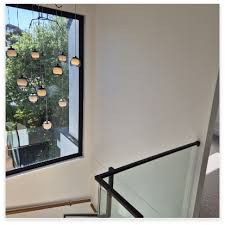Laxmikant Shetgaonkar | Offcial Website
project gallery prevailing homes — Inspiring Designs, Real Results


Discover a curated visual journey in the project gallery prevailing homes, where each completed build tells a distinct story of design intent, material choice and client collaboration. The gallery presents an accessible way to evaluate style, scale and feasibility while sparking ideas for renovations, new builds, and interior finishes.
A project gallery is more than a portfolio; it is a learning resource. For prospective homeowners, it provides real-world examples of how architectural concepts translate into livable spaces. For builders and designers, the gallery documents challenges solved on-site and innovations that worked—ranging from structural solutions to unexpected finishes that elevated a project’s character. Prevailing Homes uses their gallery to demonstrate a consistent commitment to quality, attention to detail and responsiveness to client needs.
When navigating a gallery, pay attention to sequence. Start with the exterior shots to understand massing, rooflines, and landscaping integration. Move inside to assess flow between rooms and the way natural light defines spaces at different times of day. Look for close-ups of materials—flooring joins, cabinetry details, window trims and junctions between indoor and outdoor spaces. These elements often reveal the craftsmanship level and coordination between trades.
One of the valuable features of a well-curated project gallery is the ability to compare similar floor plans executed with different materials or on different sites. Two houses with the same layout can feel entirely distinct based on facade treatments, color palettes and landscaping choices. Case studies that accompany images—detailing budget, schedule, and key design decisions—add context that turns a beautiful picture into a useful benchmark for planning your own project.
Sustainability and passive design features are increasingly prominent across modern galleries. Look for orientation strategies, window placements that maximize daylight while minimizing heat gain, and insulation or glazing upgrades. Photographs that show shading devices, deep eaves or louver systems give clues about how a home performs seasonally. Prevailing Homes tends to highlight these elements, showing how sensible design choices can reduce operational costs and improve occupant comfort without compromising aesthetics.
Material selection deserves particular scrutiny. Timber, stone, metal cladding and composite systems each impart a different sensory quality and maintenance profile. The gallery helps you see how these materials age over time when multi-year follow-up images are provided. Pay attention to transitions—how a timber deck meets a sliding door threshold or how a stone veneer ties into a concrete base. Those junctions are where durability is tested and long-term satisfaction is determined.
Lighting design—both natural and artificial—plays a pivotal role in the atmosphere of a space. Galleries that include dusk or evening photographs reveal how layered lighting (ambient, task and accent) contributes to functionality and mood. Notice the placement of fixtures relative to furniture and how concealed lighting or integrated LED strips can accent architectural features while maintaining clean sightlines.

Functionality is as important as form. Look for evidence of thoughtful circulation: relationship between kitchen, dining and outdoor entertaining zones; proximity of service areas to living spaces; and storage solutions that keep daily life uncluttered. Prevailing Homes often showcases built-in storage, practical mudrooms and ergonomic kitchen layouts that demonstrate a balance between lifestyle aspirations and routine needs.
Renovation and adaptive reuse projects offer unique lessons in working within constraints. Photographs that document the ‘before’ and ‘after’ help you understand structural modifications, reconfiguration of rooms and updates to building services. These examples can inform expectations about timeline, budget contingencies and the amount of demolition typically required to achieve a particular outcome.
For prospective clients, the project gallery is also a way to evaluate team fit. Pay attention to the consistent threads across different projects: does the studio favor clean, minimalist lines or do they embrace eclectic, layered interiors? Is there evidence of strong collaboration with landscape architects or specialist artisans? Testimonials or project notes that explain client priorities and how the team responded can be especially revealing.
Using a gallery for your planning process can be practical and efficient. Start by saving images that resonate and annotate why—whether for lighting, spatial arrangement, material, or finishes. Create a shortlist of three to five projects with similar climates or site conditions to your own; this makes comparisons more relevant. When meeting with your builder or designer, bring these references to facilitate clearer communication and quicker consensus on style and performance objectives.
For professionals, contributing to a project gallery is an opportunity to share knowledge. Detailed captions about construction sequencing, coordination challenges, and lessons learned increase the gallery’s educational value. Sharing technical details such as R-values, insulation types, or structural approaches can guide clients toward informed decisions and set realistic expectations.
Photography quality matters. High-resolution images shot at multiple times of day and from varied angles give a complete sense of scale and ambiance. Consider galleries that include floor plans and material palettes alongside photographs—this integrated approach helps translate a feeling into actionable decisions about spatial flow and finishes.
Finally, a project gallery is a living document. Revisit it periodically to discover new additions and to observe how design trends evolve. Prevailing homes and similar builders refine their processes over time, and their recent projects often reflect the latest materials, regulations, and sustainability practices. Use the gallery not only as inspiration but as an ongoing resource for making informed choices about building, renovating and living well.
In summary, a thoughtfully organized project gallery is an essential tool for anyone considering a residential project. It documents tangible results, reveals the narrative behind design choices, and offers a practical roadmap for translating inspiration into a successful build. Whether you are selecting finishes, planning for long-term performance, or simply seeking ideas, a project gallery like the one from Prevailing Homes bridges the gap between aspiration and reality.
